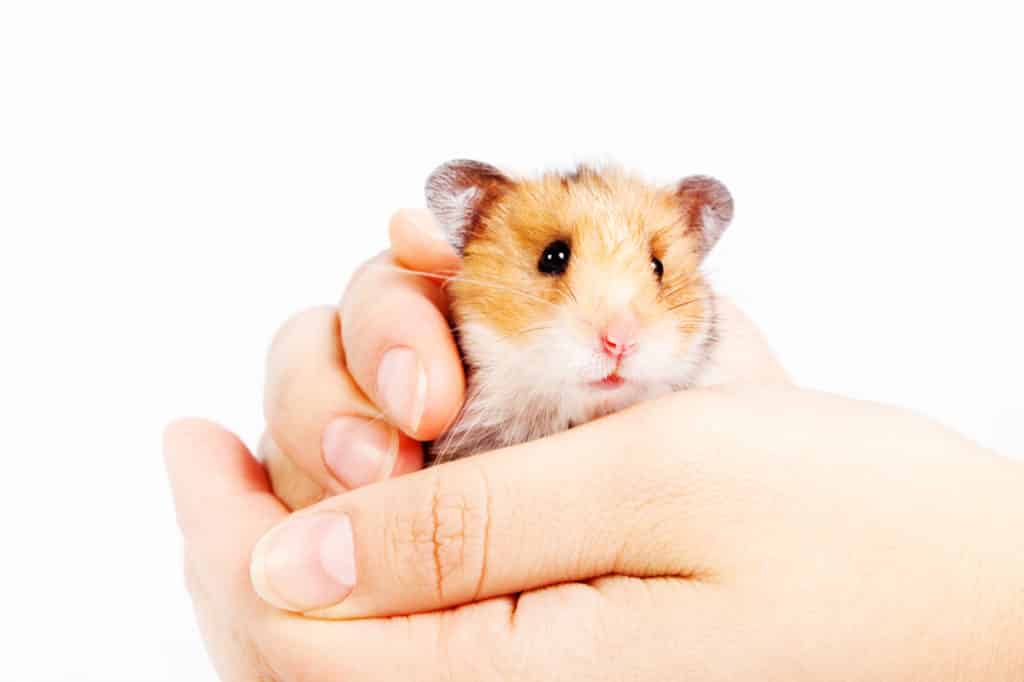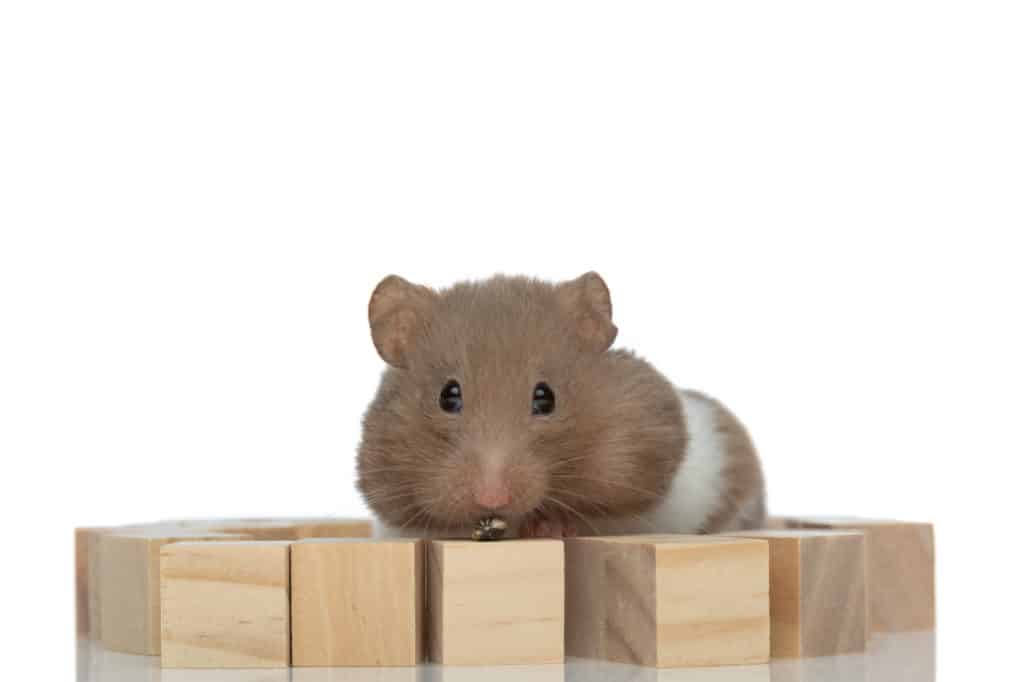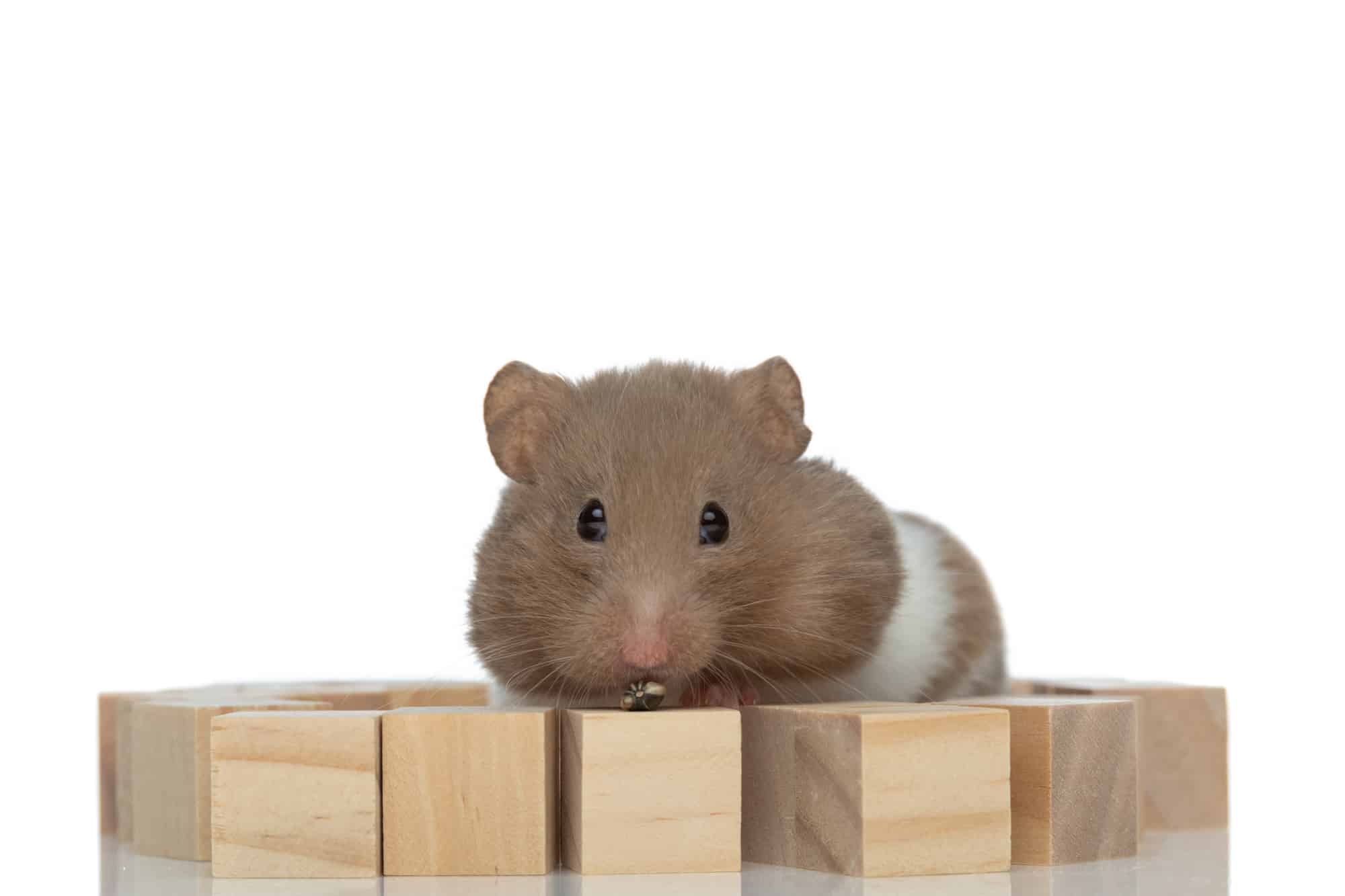Owning a hamster can be a lot of fun. But it is not fun all the time; it entails great responsibility too. After all, our pets can contract many diseases. Some of these diseases can prove deadly. One such disease in hamsters is diarrhea. In this blog post, find out everything you need to know about diarrhea in hamsters – Causes, Symptoms, treatment, and prevention.

Causes
1. Diet
Wild Hamsters live in arid areas. So, their bodies have evolved to survive in habitats with very less water by conserving it very efficiently. But on the flip side, their bodies, especially their digestive systems, cannot handle excess water. So, when given in excess, fruits and vegetables with high water content, like tomato, cucumber, lettuce, and grapes, can cause diarrhea.
Similarly, food items containing a lot of dietary fiber (especially non-soluble fiber) can also cause diarrhea. The non-soluble fiber attracts water to the stools and helps prevent constipation. But when fed in excess, it can cause diarrhea.
2. Infection
Diarrhea in hamsters is not only caused by improper diet. Sometimes, diarrhea can also be caused by infections. Let’s look at some of the most common infections that cause diarrhea in hamsters.
Infections caused by bacterial infection:
Wet Tail – The exact cause of Wet Tail, also known as Proliferative ileitis, is unknown. It is most probably caused by intestinal bacteria like Lawsonia intracellularis and Campylobacter. Factors like overcrowding, poor diet, and stress (caused while transportation, handling, etc.) increase the risk of this disease.
While hamsters of any age can contract Wet Tail, young hamsters between three and six weeks old are more susceptible to it (Source: Patton Veterinary Hospital). Wet Tail is a deadly medical condition for hamsters because the survival rates are very low. There is no effective treatment for this disease except the use of antibiotics. A pet hamster suffering from Wet Tail will probably die within a week if not treated early.
Salmonellosis – Salmonellosis is an inflammation of the intestines. It is caused by a bacterium called Salmonella. Food and water can get contaminated by the urine and feces of insects and wild rodents. When your hamster consumes the contaminated food and water, it can contract Salmonellosis. Salmonellosis can also be caused by infected bedding material.
So, if you suspect one of your pet hamsters has contracted Salmonellosis, you should isolate him immediately to prevent an outbreak. Salmonellosis can also spread from hamsters to humans (Source: Pet MD). So, you should be extremely cautious while handling a sick hamster. But even though this medical condition is deadly, you don’t have to worry excessively about your hamster contracting it because Salmonella is not that common in hamsters.
Escherichia coli infection – Escherichia coli is another bacterium that can cause diarrhea in hamsters. Unlike Salmonella, Escherichia coli infection is common among hamsters. It is caused by unhygienic living conditions and through the ingestion of contaminated food and water. It can also spread through the air.
Even though hamsters of any age can contract this infection, newborns and young hamsters are more prone to it because their immune systems are not properly developed (Source: Pet MD).
Tyzzer disease – Tyzzer disease is caused by the bacterium called Clostridium piliforme (Source: MSD Vet Manual). Its symptoms are similar to that of Wet Tail. Hamsters can contract this disease by eating the feces of infected hamsters.
Eating one’s feces might sound disgusting to humans. But hamsters do it all the time, and there is a scientific reason behind this behavior. A hamster’s stomach cannot break down all the contents of the food they eat. Some of the contents, like cellulose, are broken down in the intestines after the food has passed through the stomach. But the nutrients can only be absorbed by the stomach. So, a hamster has to eat its feces to absorb these nutrients. Hence, hamsters eat their poop all the time. If a hamster eats the feces of a hamster infected by Tyzzer disease, he will also get the disease.
This bacterium can create spores and spread easily through the environment. Hence, it is a highly contagious disease. Moreover, the spores can remain infectious for five years. Therefore, the cage, food bowls, and water containers used by sick and healthy hamsters must be cleaned thoroughly and sanitized. In addition to that, sick hamsters should be separated promptly from healthy hamsters.
Young and stressed hamsters are more prone to Tyzzer disease.
Infections caused by parasites:
Not just pathogens but parasites can also cause diarrhea in hamsters. Let’s look at two of the most common parasites below:
Tapeworms – Tapeworms are parasites that can cause inflammation and even blockage of the intestines. They can also infect the lymph nodes of hamsters. Tapeworms can infect hamsters through contaminated food and water. Insects like fleas, cockroaches, and beetles can also act as carriers and spread tapeworms. Diarrhea is a common symptom of tapeworm infection. Tapeworm infection is common in hamsters.
Tapeworms are contagious. So, you have to separate the infected hamster(s) and clean the cage thoroughly and sanitize it. Moreover, tapeworms can spread from hamsters to humans. So, you have to wash your hands thoroughly after handling your hamster even if he doesn’t show any symptoms of the infection because hamsters infected by tapeworms generally don’t show any external signs.
Pinworms – Pinworms are another type of parasite that infects hamsters. Pinworms rarely cause digestive tract problems in hamsters. Usually, a small number of pinworms live in the bodies of hamsters. But if they reach high numbers, they can cause diarrhea and even death (Source: Arizona exotic animal hospital).
Symptoms
The symptoms of diarrhea will differ based on the underlying condition. If it is just an ordinary case of diarrhea, then the feces of your hamster will be soft and light-colored (Source: Caring pets). There won’t be any other symptoms. Your hamster won’t be sick or hunched over. He will not show a reluctance to eat either.
However, if an infection is the reason behind diarrhea, your hamster will most probably look sick and lethargic. Other symptoms like watery diarrhea, loss of appetite, and weight loss may also occur. Watery feces might also make your hamster’s backside wet.
Treatment
If the symptoms indicate only diarrhea and no underlying condition, then you will have to change your hamster’s diet. Minimize or remove all fruits and vegetables and limit his diet to only dry food items. Follow this diet for a few days after your hamster has fully recovered. Hamsters are tiny creatures. So diarrhea can quickly lead to dehydration. Hence, for your hamster to recover, it is indispensable that he drinks enough water to compensate for the water lost due to diarrhea. Therefore, you should keep enough water for your hamster in his cage. But if your hamster doesn’t drink the water by himself, you must use a water dropper to help him drink the water. If you follow this procedure, your hamster should normally get better within a few days.
But if your hamster doesn’t recover within a few days of following this procedure, or if your hamster shows any symptoms besides diarrhea, it is best to take him to a vet as soon as possible.
But regardless of whether your hamster is suffering from diarrhea or any other underlying condition, you should always separate the infected animal from the healthy animals (if you own multiple hamsters). Moreover, you should also wash your hands properly every time after handling your hamster because some infections can also spread to humans. Clean thoroughly and sanitize the cage properly.
Now that we know what causes diarrhea and how to treat it, it’s time to find out how to prevent it. After all, prevention is better than cure. Isn’t it?
Prevention
If you introduce a new food item to your hamster, start small. Then increase the quantity slowly over a few weeks until you reach the correct serving size.
Fruits and vegetables are good for your hamster because they help simulate his natural diet. Moreover, if you give your hamster only the commercially available hamster mix, he might get bored. So, you should include fruits and vegetables in his diet. In addition to that, if you feed a variety of fruits and vegetables, your hamster will have the chance to choose his favorite food.
But despite the benefits that fruits and vegetables offer, you should never feed too much of any fruit or vegetable that has a lot of water, sugar, or fiber content. If possible, pick vegetables with low water content, like carrot, broccoli, etc., over vegetables with high water content. Consult a vet if you need help creating a proper diet plan for your hamster.
Most of the infections that lead to diarrhea are caused by poor sanitation. So, clean your hamster’s cage thoroughly. Remove any uneaten pieces of food items within 24 hours. Keep fresh drinking water for your hamster every day. Clean the water bottle daily so that algae don’t start growing on it. Ensure that the room isn’t cold or too moist (to prevent mold from growing).



